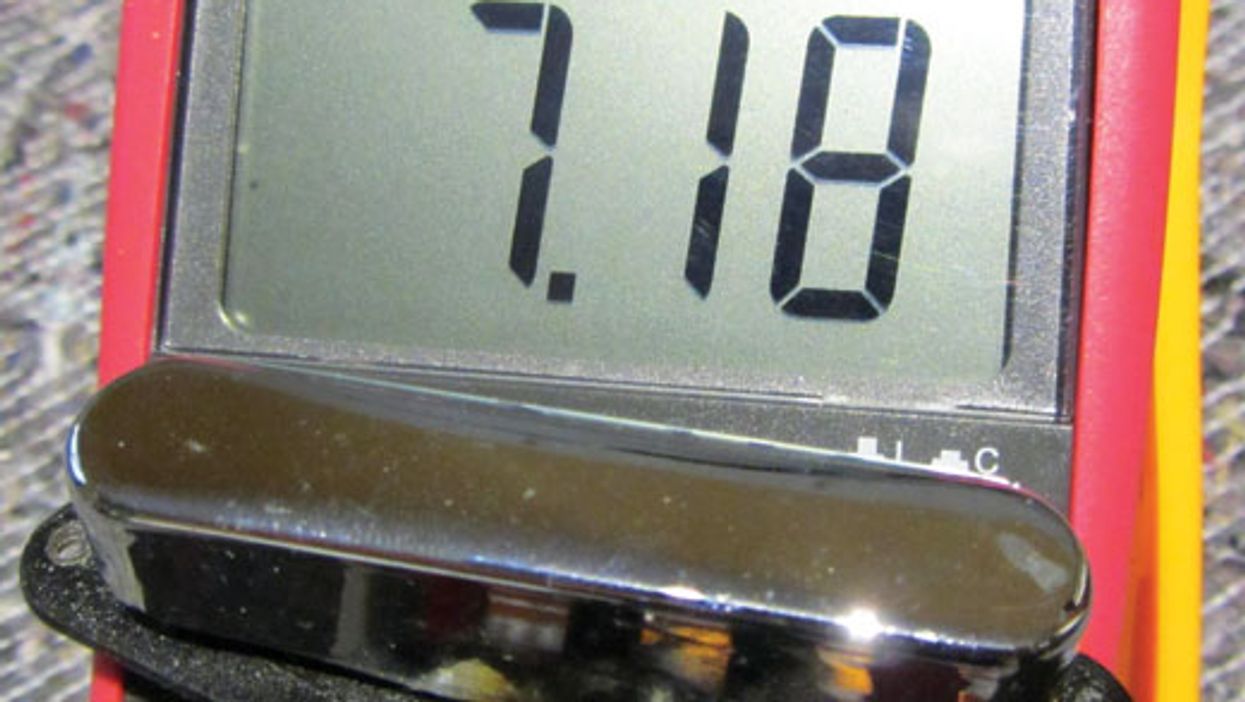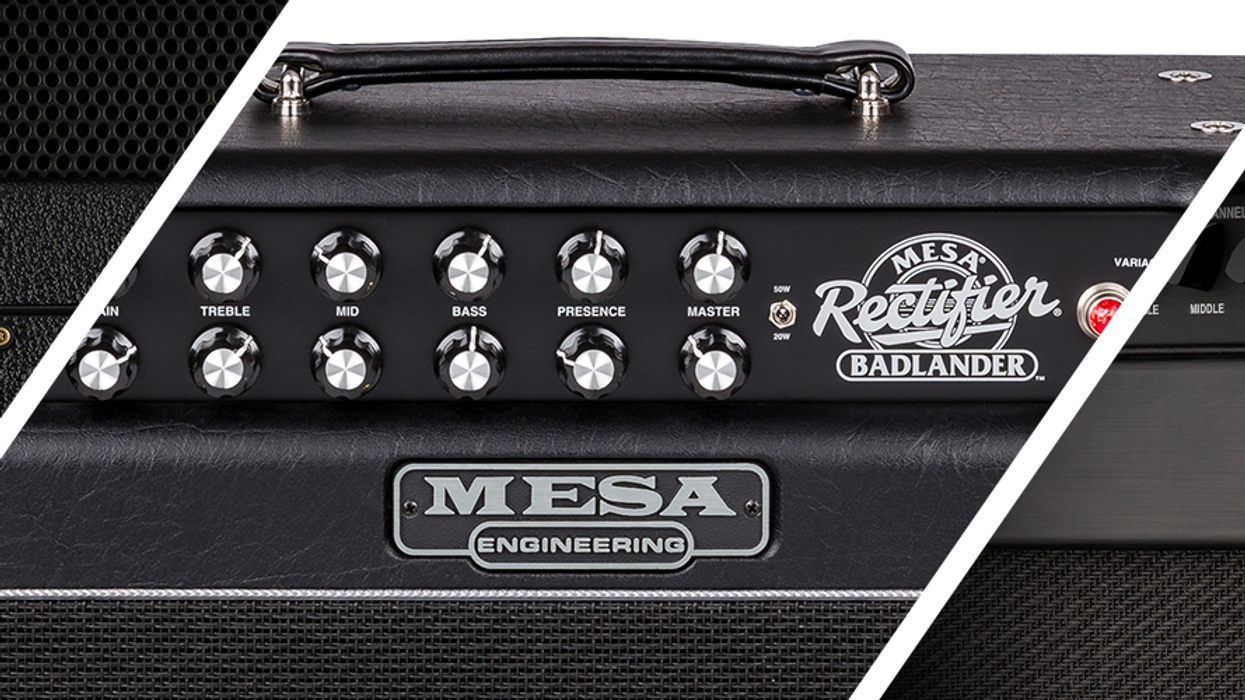We all know pickups are the beating heart of our beloved electric guitars, but for many players—even those with strong opinions about tone—the specs used to describe these bundles of magnets and wires remain a mystery. This month we'll start exploring the technical side of pickups, beginning with what appears to be the king of all pickup parameters: the DC resistance (DCR) value. Over the following months, we'll investigate other parameters, too, so if you want a crash course in pickup-speak, stay tuned. To keep project-minded folks happy, I'll intersperse these forays into pickup nerdism with classic mod columns, so don't stash that soldering iron.
A typical pickup description—the kind you find everywhere on the internet—usually starts with endless speculation about how close a given pickup sounds to a vintage one, how it's constructed, and how superior it is to all other pickups. All this is followed by a laundry list of specs. In an effort to cut through the marketing hype, it's worth learning how to interpret individual pickup parameters to understand what they're telling us about a particular model.
Personally, I think a complete and helpful technical pickup description should look like this:
Magnets: Staggered A5 alnico rod magnets with D and G strings raised
Magnet polarity: South (towards the strings)
Magnet wire: Plain enamel AWG 42
Winding direction: Top right, top going
Number of turns: 7,600
Resistance: DCR 6.5k ohm
Inductance: 2.9 H @120 Hz
Quality factor Q: 5.95
Resonant peak: 7.850 Hz
There are even more parameters—including magnet strength (measured in gauss), AC resistance (measured in k ohm), capacitance (measured in pF), output (measured in mV), and resonant frequency (measured in kHz)—but those listed above are the ones I consider important, so that's what we'll be exploring in this occasional series. The physics behind all this can be very complex. In the context of this column, however, we'll keep things basic and player-friendly.
To get a sense of how builders describe their pickups, let's look at five real-world examples:
• alnico 3 magnets for medium output: neck 6.4k, middle 6.5k, bridge 6.8k
• output: 6.5 DCR / magnet: alnico 5 / cables: plastic coated
• neck pickup: DCR 5.8k ohm / inductance 2.4H @ 1 kHz / heavy Formvar wire
• alnico 2 magnets / output mV: 125 / DCR: 6.15k / treble 9.0, mid 3.5, bass 3.5
• alnico 5 magnets / 42-gauge Formvar wire / 5.8k / middle RWRP
One thing we can conclude from these disparate descriptions is that the DCR parameter seems to be the most important because it appears in each one. In fact, it's hard to find a pickup description without it, even though how it's presented is inconsistent.
You might find DCR mentioned this way: “With a DC resistance rating of 8.6k ohm, [insert pickup model] is more powerful than most single-coils, and will give many humbuckers a run for their money."
Ah, I see ... DCR must be the pickup parameter that represents volume, power, and output. Well, at least this is what such descriptions want you to believe, but is this true?
DCR stands for direct current resistance, and it's very easy to measure (which is why I suspect it is always mentioned in pickup descriptions). All you need is a simple digital multimeter (DMM). Set it to ohm and connect the two pickup leads to your DMM. If your DMM doesn't have an auto-range function, set it to 20k ohm. Now you'll get the DCR reading for your pickup (Photo 1).
Incidentally, the DCR reading is affected by such things as temperature, tension of the winding, tolerances regarding the number of turns, wire gauge, and measuring tolerances of your DMM, so the factory value of your pickup description will only be close to what you are reading at home. Don't worry, it's the nature of the beast and doesn't mean your pickup is faulty.
Regardless of the hype, the DCR reading tells us absolutely nothing about a pickup's tone. It's also useless for gauging output, volume, or power—whatever you want to call it. If you think otherwise, here is a nice experiment: Measure the DCR of any given pickup, then remove the pickup's magnet(s) and measure again. Guess what? You'll get the same DCR reading as before, but the pickup's output will be close to zero!
Here's another reason to debunk the idea of equating a high DCR reading with increased output. In one of my personal Esquires, I have a pickup that's loud as hell but has a DCR reading of 3.9k ohm.
To summarize: A pickup's DCR reading doesn't tell us anything about its potential tone or its output. Increased output doesn't come from more ohms, but rather more turns, which create more inductance.
So what does DCR tell us? It's not completely useless: When you know the nominal factory DCR value, let's say 7.5k ohm, and your DMM shows “infinite" or “overload," you know the pickup wire is broken. When you read something around 2-3k ohm, your pickup likely has a short circuit in the winding. So it provides a basic reference point that can be very useful when troubleshooting a pickup.
The next pickup parameter we'll discuss in a future column is polarity. But next month, I'll pull the curtains back on the world of hidden or “stealth" pickups and show you what it takes to convert such antique technology to modern specs. Until then ... keep on modding!










![Rig Rundown: Russian Circles’ Mike Sullivan [2025]](https://www.premierguitar.com/media-library/youtube.jpg?id=62303631&width=1245&height=700&quality=70&coordinates=0%2C0%2C0%2C0)








